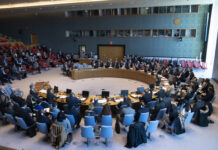Photo credit: DiasporaEngager (www.DiasporaEngager.com).
- Lack of healthcare price controls has exposed those without insurance covers forcing them to part with billions to finance health.
- Health insurance schemes are increasingly gaining traction in countries like Rwanda helping to ease healthcare burden.
- The report further notes that countries like Kenya, Tanzania, and Uganda have faced challenges in implementing national health insurance schemes.
The lack of government-mandated price controls for out of pocket health expenditures has left a financial burden for low-income households in East Africa accessing medication, according to a new report.
The survey titled Primary Healthcare Financing in East Africa, shows that Out-of-Pocket (OOP) payments are the primary form of transactions in East Africa.
However, the trend poses a significant financial burden for poor families and households due to the lack of price controls on healthcare in the country.
The survey by Medic East Africa and Medlab East Africa shows that among the east African states Uganda has the highest out of pocket health expenditure in the region at 38 per cent.
Tanzania comes second with 34 per cent followed by Kenya with 24 per cent. Rwanda leads the region with the least out of pocket expenditure on medication at 11.7 per cent.
Read Also: Integrating Adoption of Artificial Intelligence in healthcare
The reports note that despite the high expenditures, health insurance schemes are increasingly gaining traction in countries like Rwanda helping to ease healthcare burden.
“Informal initiatives sponsored by community-based or faith-based organisations are often more popular than formal insurance programmes.”
“However, most schemes in the region face a shortfall in funds, limiting the translation of insurance coverage into actual benefits for the overall population,” the report reads in part.
Lack of Healthcare Price Controls
Meanwhile, Kenyan families are still spending billions from their pockets on health services raised through harambees, WhatsApp groups, M-Pesa, loans, the sale of land, and other assets. This is even with the availability of medical insurance covers such as the NHIF.
The report further notes that countries like Kenya, Tanzania, and Uganda have faced challenges in implementing national health insurance schemes.
“Kenya’s effort to replace the National Health Insurance Fund with the Social Health Insurance Fund (SHIF) has faced opposition from the Kenya Medical Practitioners, Pharmacists, and Dentists Union,” reads the report in part.
It is estimated that Kenyans spend Sh150 billion in out-of-pocket expenditures on health services a year driving nearly a million into poverty despite the State’s efforts on ensuring financial protection.
According to Kenya Demographic Health Survey (KDHS) 2022, The latest report that comprehensively covers Kenyas health sector, only one in four Kenyans has some form of health insurance, with the country’s health insurance coverage at 20 per cent.
The government targets to hit 80 per cent of the population enrolled in health insurance coverage by 2030.
With 15.4 million members, the latest data shows that the NHIF has a total of 8.8 million dormant members which further compels them to cater for medical services directly from their pockets.
This figure is expected to have shot up to date due to socioeconomic factors such as the high cost of treatment and drugs, the income, age, and education level of households which is worse experienced by those living below $1 dollar a day.
The report recommends that governments can reduce out-of-pocket (OOP) spending by establishing a universal pool of funds, raised through individual contributions and taxation, to address local healthcare needs.
The pool can function as a social health insurance system, protecting individuals and families from unexpected medical expenses.
“For the system to succeed, the roles of the government as the funder, the fund administrator as the purchaser, and healthcare facilities as providers must be clearly defined,” report says in part
East Africa’s healthcare system currently suffers from a critical shortage of medical professionals, with only an average of 0.2 doctors per 1,000 people.
This lack of staff is compounded by a rise in non-communicable diseases, which are now a leading cause of death in the region.
The situation is further complicated by high child and maternal mortality rates. East Africa falls short of the UN Sustainable Development Goal on Good Health and Well-being.
This SDG advocates for a significant reduction in child mortality under five and improvements in maternal healthcare.
Currently, access to quality healthcare services remains limited, with only 34 per cent of the population having sufficient coverage. Despite these hurdles, there are reasons for optimism. Kenya is leading the way in healthcare innovation.
Increased investment in health infrastructure is bolstering the system, with digital technologies like telemedicine playing a growing role.
Telemedicine helps to alleviate pressure on medical staff and improves access to care for those facing financial or geographical barriers.
“Innovation and strong partnerships are key to our country’s goal of achieving UN healthcare targets by 2030,” said Dr Joseph Lenai, Acting Director of Preventive and Promotive Health Services from the Ministry of Health.
Kenya’s growing prominence in the field of healthcare is evident in its expanding role in clinical trials and vaccine production.
The country’s recent partnership with the International Vaccine Institute will facilitate technology transfers for essential vaccines. Additional investments are being made in domestic vaccine production capabilities.
Read Also: Women’s health, determinant to Africa’s economic development
Source of original article: Industry and Trade – The Exchange (theexchange.africa).
The content of this article does not necessarily reflect the views or opinion of Global Diaspora News (www.GlobalDiasporaNews.com).
To submit your press release: (https://www.GlobalDiasporaNews.com/pr).
To advertise on Global Diaspora News: (www.GlobalDiasporaNews.com/ads).
Sign up to Global Diaspora News newsletter (https://www.GlobalDiasporaNews.com/newsletter/) to start receiving updates and opportunities directly in your email inbox for free.

































